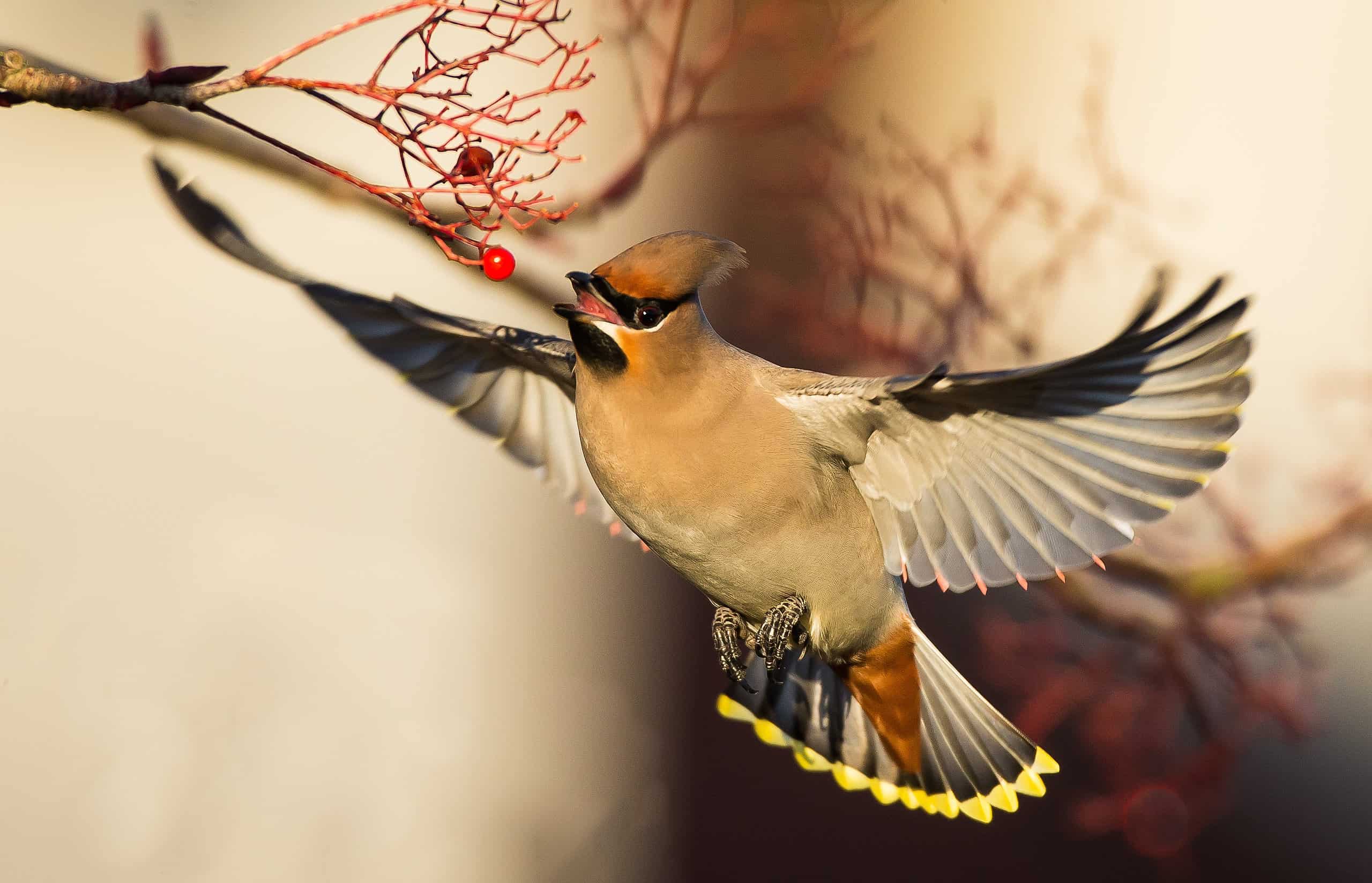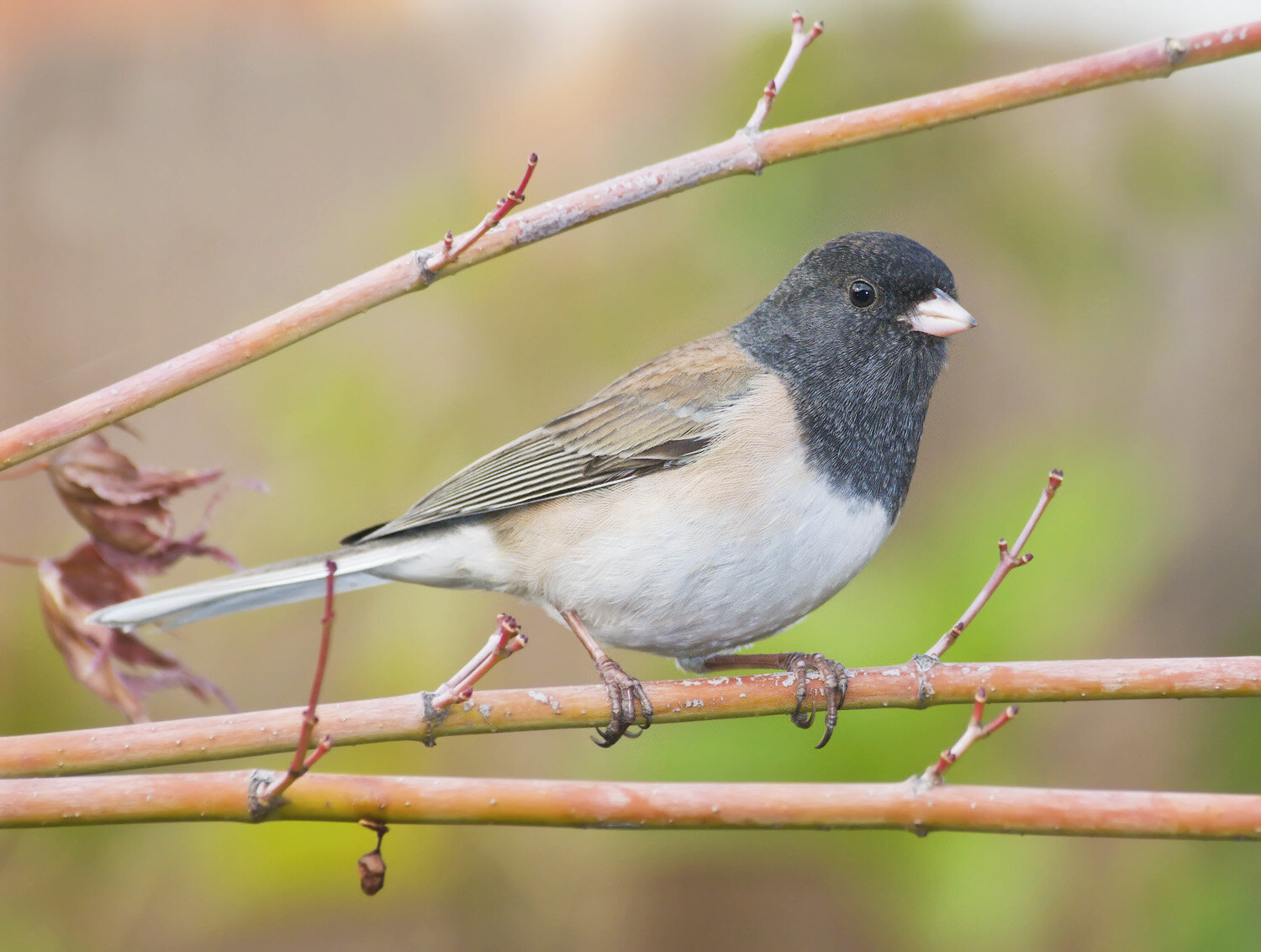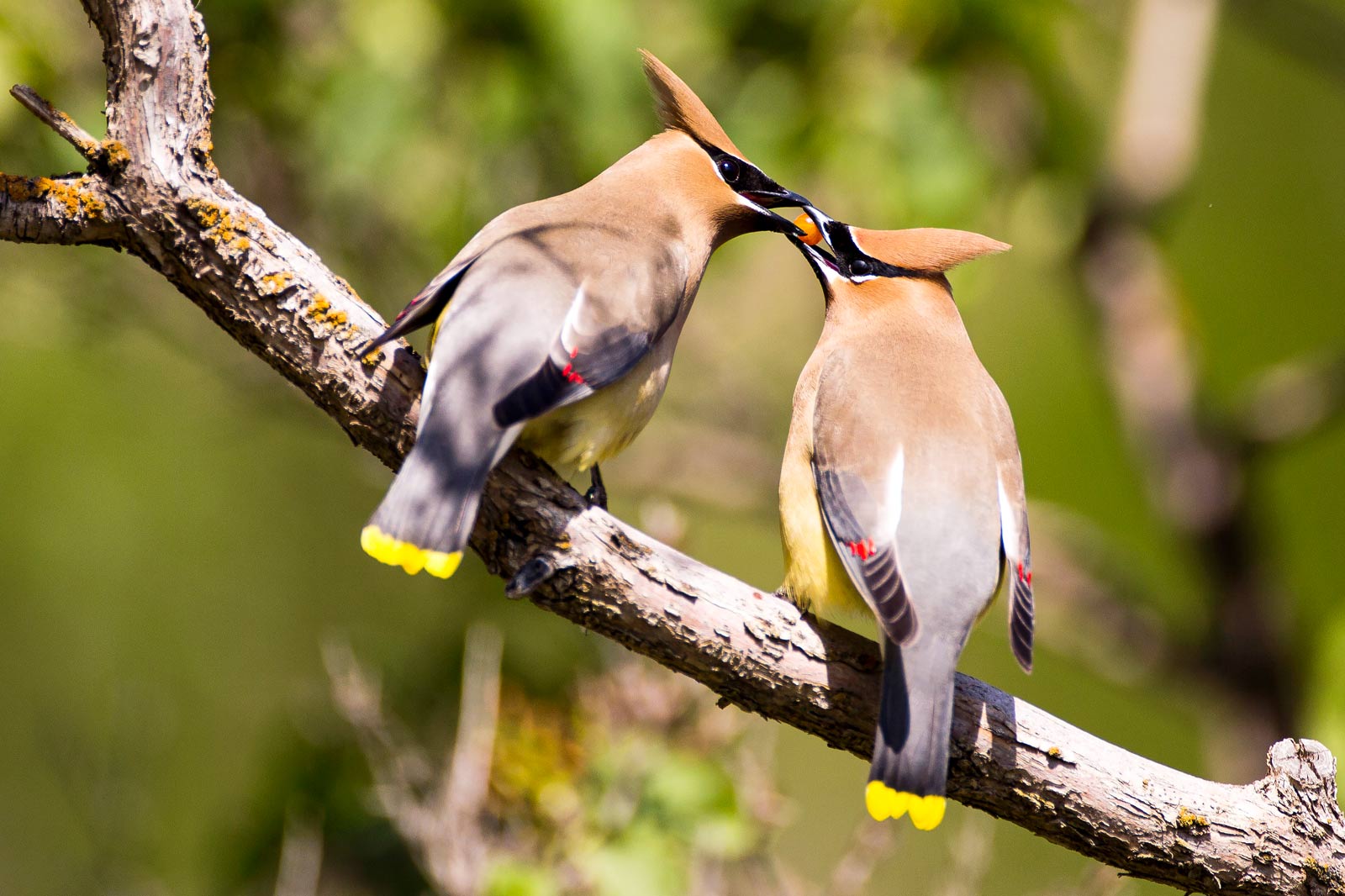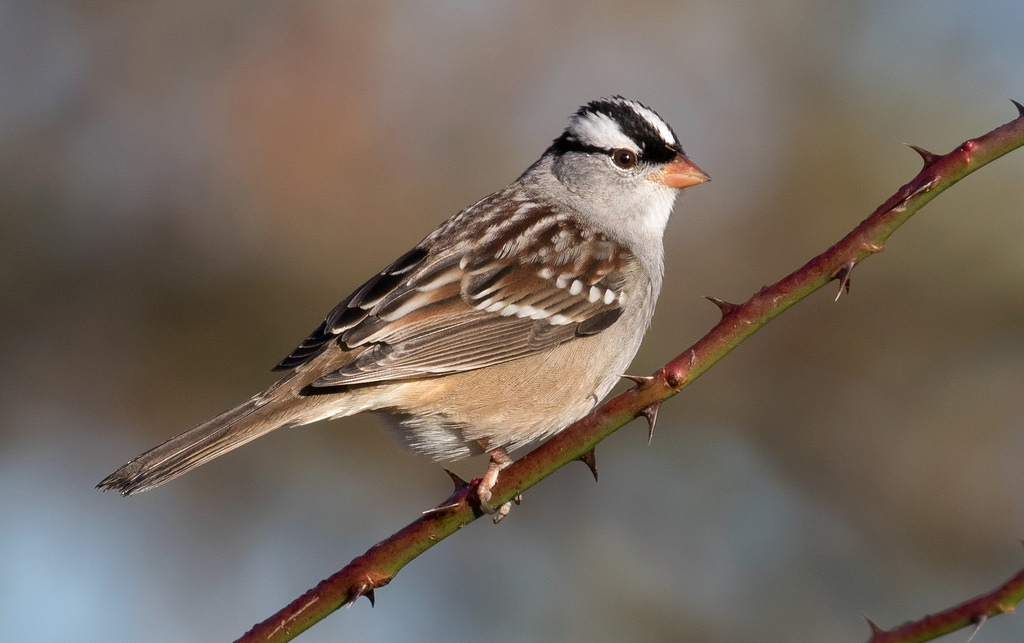California is home to a diverse range of bird species, with over 450 species recorded. The state’s varied habitats, including forests, mountains, beaches, and deserts, provide homes for a wide variety of birds.
With spring underway, many resident birds have already begun nesting and raising young, while long-distance migrants have started trickling through from warmer and tropical locales. As a major stop along the Pacific Flyway, up to a billion birds of hundreds of species will pass through California during spring migration.
You are reading: 10 Types Of Birds In California
In this article, we will highlight 10 types of birds that can be found in California, including year-round residents, winter visitors, and migratory species.

10 Types Of Birds In California
Dark-eyed Junco

The Dark-eyed Junco is a medium-sized sparrow that is one of the most common birds in North America. They can be found across the continent, from Alaska to Mexico, and from California to New York.
Dark-eyed Juncos are birds of the ground, hopping around the bases of trees and shrubs in forests or venturing out onto lawns looking for fallen seeds. They are slightly larger than a Chipping Sparrow and have a rounded head, a short, stout bill, and a fairly long, conspicuous tail.
The species is common in Santa Clara County and can be found in forested areas. In winter, flocks of Juncos can be found around woodland edges and suburban yards, feeding on the ground.
The Dark-eyed Junco is a migratory bird, but some populations in southwestern mountains and on the southern Pacific Coast may be permanent residents. The female builds an open cup nest of grass, weeds, leaves, lined with fine grass and sometimes with hair or feathers.
Allen’s Hummingbird
Allen’s Hummingbird is a small, compact, and stocky hummingbird that is a close relative of the Rufous Hummingbird. It is one of the two common nesting hummingbirds in California.
The species breeds in a narrow strip of habitat along coastal Oregon and California, in coastal forest, scrub, and chaparral. The male has a green back and forehead, with rust-colored flanks, rump, and tail, and an iridescent orange-red throat.
The female and immature Allen’s Hummingbirds are similarly colored, but lack the iridescent throat patch, instead having a series of speckles on their throats.
The species is migratory, with northbound birds departing their wintering grounds as early as December and arriving on their breeding grounds as early as January.
Read more : When To Clean Out Bird Houses?
Allen’s Hummingbirds mostly spend the winter in Mexico, but some stay in southern California year-round. The species has adapted fairly well to suburban habitats, but surveys still show decreasing populations in recent decades.
California Towhee
The California Towhee is a bird species that is native to the coastal regions of western Oregon and California in the United States and Baja California and Baja California Sur in Mexico. Here are some key facts about the California Towhee:
– Habitat: The California Towhee’s natural habitat is California’s brush, chaparral, open woodlands, and along streams adjacent to desert slopes. They have also widely adapted to parks and gardens and are found throughout Baja California.
– Range: California Towhees can be found along the North Pacific coastline from Southern Oregon, USA to Baja California, Mexico.
– Behavior: The California Towhee is a non-migratory bird and they only change their homes when finding a mate. They are ground foragers and are more likely to be attracted by feed spread on the ground than in hanging feeders.
– Population: Within the half century of 1966–2015, the population of the California Towhee was stable, with a slight decline in population due to increased temperatures and urbanization. The organization, Partners in Flight, estimates that 61% of actively breeding California Towhees live in the United States, while the remainder live in Baja California, Mexico. This bird has a global breeding population of around nine million birds spread across this range, making them a minimally threatened species.
– Adaptation to human presence: California Towhees have adapted to human presence in California. As suburbs and cities were developed in the state, towhees have moved into parks in lowland towns, as well as backyards with appropriate shrubbery. Consequently, they are found eating garden produce, such as apricots, plums, and peas.
Overall, the California Towhee is a common bird species in California that has adapted well to human presence and can be found in a variety of habitats, including parks, gardens, and natural areas.
Oak Titmouse
The Oak Titmouse (Baeolophus inornatus) is a small passerine bird in the tit family Paridae. Here are some key facts about the Oak Titmouse:
Identification
– Oak Titmice are plain gray-brown birds, slightly darker above than below, and may show a slight buffy wash on the flanks.
– They have a small tuft or crest on their head, and their face is plain, with lighter gray undersides.
– They are completely nondescript and lack any sort of color pattern.
Habitat and Range
– The Oak Titmouse is found in oak woodlands and oak savannas in California and southwestern Oregon.
– They are year-round residents in their range and do not migrate.
– The species reaches the northern limit of its range in southwest Oregon.
Behavior
– Oak Titmice are active and constantly moving, often in small family groups bustling through their habitat.
– They form pairs or small groups, but do not form large flocks.
– The Oak Titmouse will sleep in cavities, dense foliage, or birdhouses.
– They may join mixed-species flocks after the breeding season for foraging.
Breeding
– The Oak Titmouse builds its nest in a woodpecker hole, a natural cavity, or a nest box, using grass, moss, mud, hair, feathers, and fur.
– They breed from March into July, with peak activity in April and May.
– Pairs stay together after the breeding season.
Vocalization
– The song of the Oak Titmouse is a series of repeated phrases of two or three notes with the last note of lower pitch; usually three to seven phrases are grouped together.
– The call is a scratchy tsicka-dee-dee.
Overall, the Oak Titmouse is a plain, nondescript bird that is active and constantly moving, often in small family groups. They are found in oak woodlands and oak savannas in California and southwestern Oregon. The species is a year-round resident in its range and does not migrate.
Cedar Waxwing

The Cedar Waxwing is a medium-sized passerine bird that is a member of the waxwing family of passerine birds. Here are some key facts about the Cedar Waxwing:
Identification
– Cedar Waxwings are silky, shiny birds that are mostly brown, gray, and yellow, with a subdued crest.
– They have a distinctive black mask outlined in white and a bright yellow tail tip.
– They are medium-sized birds, approximately 6-7 inches (15-18 cm) long, with a wingspan ranging from 8.7 to 11.8 inches (22-30 cm).
Habitat and Range
– Cedar Waxwings are native to North and Central America, breeding in open wooded areas in southern Canada and wintering in the southern half of the United States, Central America, and the far northwest of South America.
– They are found year-round mostly in the northern half of the United States, with non-breeding winter populations found from the Midwest and southern states down through Mexico, the Caribbean, Central America, and the northwestern reaches of Colombia.
– Cedar Waxwings occupy a variety of habitats, from deciduous and evergreen woodlands to orchards, suburban parks, and backyards.
Behavior
– Cedar Waxwings are sociable birds that often feed in large flocks, particularly outside the breeding season.
– They are vocal birds, sounding off with high-pitched, cricket-like whistles and buzzy, ascending trills, often described as “sree”.
– The species is nomadic and non-territorial, showing up where food sources are most abundant and then moving on.
Diet
– Cedar Waxwings specialize in eating sugary fruit, including elderberries, cedar berries, wild cherries, and mulberries.
– They also eat insects, particularly during the breeding season when they need more protein.
Breeding
– Cedar Waxwings form monogamous bonds during each breeding season.
– The courtship ritual begins when a male dances for a female and gives her fruit, flower petals, or insects.
– The pair produces one to two clutches from June to August.
Overall, the Cedar Waxwing is a sociable bird that is known for its distinctive appearance and vocalizations. They are found in a variety of habitats across North and Central America and specialize in eating sugary fruit.
California Scrub-Jay
The California Scrub-Jay is a species of scrub jay native to western North America. Here are some key facts about the California Scrub-Jay:
Identification
– The California Scrub-Jay is often referred to as the “blue jay” of dry lowlands along the Pacific seaboard.
– They have a deep azure blue head, wings, and tail, with clean white underparts and soft gray-brown feathers.
– The throat is whitish with a blue necklace, and they have white eyebrows.
– They are approximately 27-31 cm (11-12 in) in length, with a 39 cm (15 in) wingspan, and weigh about 80 g (2.8 oz).
Habitat and Range
– The California Scrub-Jay ranges from southern British Columbia throughout California and western Nevada near Reno to west of the Sierra Nevada.
– They inhabit areas of low scrub, preferring pinon-juniper forests, oak woods, and edges of mixed evergreen forests.
– They are often found in urban areas, where they can become tame and will come to bird feeders.
Behavior
– California Scrub-Jays are animated, vocal, and playful birds that move about in bold hops and lunges, looking around with sharp turns.
– They are non-migratory and can be found year-round in their range.
– Pairs of California Scrub-Jays are often seen together.
– They build their nests in bushes and low trees, usually not more than 5 to 15 feet above the ground, and both the male and female build the nest.
Vocalization
– The call of the California Scrub-Jay is described as “harsh and scratchy”.
Overall, the California Scrub-Jay is a distinctive bird that is often found in urban areas and inhabits areas of low scrub. They are animated, vocal, and playful birds that are often seen in pairs.
House Finch
The House Finch (Haemorhous mexicanus) is a small bird that is native to western North America. Here are some key facts about the House Finch:
Identification
– House Finches are small-bodied finches with fairly large beaks and somewhat long, flat heads.
– They have a red head, breast, and rump, but do not have red coloring on their brown back or wings.
– The males have red feathers on the head, throat, and at the base of the tail, and dark stripes on the sides and belly.
– The females are brown with stripes on the sides and belly.
– They are approximately 12.5 to 15 centimeters (5 to 6 inches) long, with a wingspan of 20 to 25 cm (8 to 10 in), and weigh about 16 to 27 g (9⁄16 to 15⁄16 oz).
Habitat and Range
– House Finches are native to open and desert habitats, but have expanded their range, naturally and through introductions, and now can be found in almost any kind of human-altered habitat.
– They are found from coast to coast in the United States, as far north as southern Canada, and as far south as Mexico.
– They are permanent residents in their range and do not migrate.
Behavior
– House Finches are granivorous birds that eat primarily seeds, including sunflower seeds, weed seeds, and grains.
– They also eat fruit, sap, and plant buds.
– They are frequent visitors to bird feeders throughout the year, particularly if stocked with sunflower or nyjer seed, and will congregate at hanging nyjer sock feeders.
– House Finches are social birds and are often seen in flocks.
Breeding
– House Finches breed from March to August, with peak activity in April and May.
– The female deposits two to six, blue-green eggs with black dots.
– She incubates the eggs for the entire 12- to 14-day incubation period.
– Two or more broods may be raised per year.
Overall, the House Finch is a small bird that is native to western North America and can be found in almost any kind of human-altered habitat. They are granivorous birds that eat primarily seeds and are frequent visitors to bird feeders throughout the year. House Finches are social birds and are often seen in flocks.
American Robin
The American Robin (Turdus migratorius) is a migratory bird of the true thrush genus and Turdidae, the wider thrush family. Here are some key facts about the American Robin:
Identification
– American Robins are gray-brown birds with warm orange underparts and dark heads.
– They have a red head, breast, and rump, but do not have red coloring on their brown back or wings.
– The males have red feathers on the head, throat, and at the base of the tail, and dark stripes on the sides and belly.
– The females are brown with stripes on the sides and belly.
– They are approximately 12.5 to 15 centimeters (5 to 6 inches) long, with a wingspan of 20 to 25 cm (8 to 10 in), and weigh about 16 to 27 g (9⁄16 to 15⁄16 oz).
Habitat and Range
– The American Robin is widely distributed throughout North America, wintering from southern Canada to central Mexico and along the Pacific coast.
– They inhabit open woodlands, fields, gardens, yards, and lawns across their range.
– They are migratory birds and move in flocks, often by day.
Behavior
– American Robins are granivorous birds that eat primarily seeds, including sunflower seeds, weed seeds, and grains.
– They also eat fruit, sap, and plant buds.
– They are frequent visitors to bird feeders throughout the year, particularly if stocked with sunflower or nyjer seed.
– American Robins are social birds and are often seen in flocks.
– They are the quintessential early bird and are often seen tugging earthworms out of the ground.
Breeding
– American Robins breed from March to August, with peak activity in April and May.
– The female deposits two to six, blue-green eggs with black dots.
– She incubates the eggs for the entire 12- to 14-day incubation period.
– Young leave the nest about 14-16 days after hatching.
– Two or more broods may be raised per year.
Read more : Discover The Top 10 Most Expensive Parrots In The World
Overall, the American Robin is a migratory bird that is widely distributed throughout North America and is often seen in open woodlands, fields, gardens, yards, and lawns. They are granivorous birds that eat primarily seeds and are frequent visitors to bird feeders throughout the year. American Robins are social birds and are often seen in flocks.
Western Bluebird
The Western Bluebird (Sialia mexicana) is a small North American thrush that is widely distributed throughout North America, from southern Canada to central Mexico and along the Pacific coast. Here are some key facts about the Western Bluebird:
Identification
– Western Bluebirds are small thrushes with a deep blue head, back, and wings, and deep orange breast and sides in males.
– Females are grayer overall with a blue tinge on the wings and tail, and a pale orange wash on the breast and sides.
– They are approximately 15 cm (6 in) long, with a wingspan of 25 cm (10 in), and weigh about 28 g (1 oz).
Habitat and Range
– Western Bluebirds inhabit open parklands, woodlands, and woodland edges across their range.
– They are found year-round in their range and do not migrate.
Behavior
– Western Bluebirds are insectivorous birds that feed on insects and berries.
– They nest in holes in trees or nest boxes and often gather in small flocks outside of the breeding season to feed on insects or berries.
– They have a quiet, chortling call.
Breeding
– Western Bluebirds breed from May to July.
– Females typically lay one to two eggs.
– Both male and female Western Bluebirds can begin reproducing once they are a year old.
Overall, the Western Bluebird is a small thrush that is widely distributed throughout North America and inhabits open parklands, woodlands, and woodland edges. They are insectivorous birds that feed on insects and berries and nest in holes in trees or nest boxes.
White-Crowned Sparrow

The White-Crowned Sparrow (Zonotrichia leucophrys) is a medium-sized passerine bird native to North America. Here are some key facts about the White-Crowned Sparrow:
Identification
– White-Crowned Sparrows are medium-sized birds with a gray face and black and white streaking on the upper head.
– They have black and white stripes on their head, a gray face, brown streaked upper parts, and a long tail.
– The wings are brown with bars and the underparts are gray.
– Their bill is pink or yellow.
– They are similar in appearance to the White-Throated Sparrow, but do not have the white throat markings or yellow lores.
– They are approximately 5.9-6.3 inches (15-16 cm) in length, with a wingspan of 8.3-9.4 inches (21-24 cm), and weigh about 0.9-1.0 oz (25-28 g).
Habitat and Range
– White-Crowned Sparrows breed in brushy areas in the taiga and tundra of the northernmost parts of the continent and in the Rocky Mountains and Pacific coast.
– They are found year-round in their range and do not migrate.
– In the winter, they can be found in any brushy or weedy areas, often hopping on the ground.
Behavior
– White-Crowned Sparrows are granivorous birds that eat primarily seeds, including sunflower seeds, weed seeds, and grains.
– They also eat fruit, sap, and plant buds.
– They are frequent visitors to bird feeders throughout the year, particularly if stocked with sunflower or nyjer seed.
– White-Crowned Sparrows are social birds and are often seen in flocks.
Breeding
– White-Crowned Sparrows breed from May to July.
– Females typically lay one to two eggs.
– Both male and female White-Crowned Sparrows can begin reproducing once they are a year old.
Overall, the White-Crowned Sparrow is a medium-sized passerine bird that is native to North America and can be found in brushy areas in the taiga and tundra of the northernmost parts of the continent and in the Rocky Mountains and Pacific coast. They are granivorous birds that eat primarily seeds and are frequent visitors to bird feeders throughout the year. White-Crowned Sparrows are social birds and are often seen in flocks.
FAQS
1. What are the 10 most common backyard birds in Southern California?
The 10 most common backyard birds in Southern California are the House Finch, Allen’s Hummingbird, California Scrub-Jay, Mourning Dove, American Crow, Anna’s Hummingbird, White-Crowned Sparrow, Lesser Goldfinch, Bushtit, and Northern Mockingbird.
2. What are the top 10 birds in California?
The top 10 birds in California include the Dark-eyed Junco, Allen’s Hummingbird, Cooper’s Hawk, California Condor, Western Bluebird, California Quail, American Kestrel, Peregrine Falcon, Snowy Plover, and Yellow-billed Magpie.
3. What are some common backyard birds in California?
Some common backyard birds in California include the House Finch, Allen’s Hummingbird, California Scrub-Jay, Mourning Dove, Anna’s Hummingbird, White-Crowned Sparrow, Lesser Goldfinch, Bushtit, Northern Mockingbird, and Western Bluebird.
4. How many different species of wild birds are in California?
According to the California Bird Records Committee, as of 2021 there have been at least 676 species of birds seen in the state of California.
5. What are some tips for attracting birds to your backyard in California?
To attract birds to your backyard in California, you can provide food, water, and shelter. Some common bird foods include sunflower seeds, nyjer seed, suet, and mealworms. You can also provide a bird bath or fountain for water, and plant native trees and shrubs for shelter.
6. What are some birdwatching hotspots in California?
Some birdwatching hotspots in California include the Salton Sea, Mono Lake, Point Reyes National Seashore, and the San Francisco Bay Area.
7. How can I identify common backyard birds in California?
You can identify common backyard birds in California by their physical characteristics, such as size, color, and markings. You can also use a field guide or bird identification app to help with identification.
Source: https://petstutorial.com
Category: Birds










